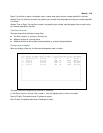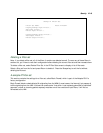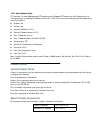
Security 12-17
10. Select ICMP Code Compare and choose one of the following options from the pop-up menu: No Compare,
Not Equal To, Less Than, Less Than or Equal, Equal, Greater Than or Equal, or Greater Than.
11. In addition to the Type, an 8-bit field, Code, gives more information about the Type. Select ICMP Codes and
select more information about the type. The choices are:
It is unlikely that you would need to filter on ICMP code types. However, if you should find it necessary, refer
to standard texts on internetworking with TCP/IP for more information.
Now skip to step 14.
12. If the Protocol Type is TCP or UDP, select Source Port Compare and choose a comparison method for the
filter to use on a packet’s source port number. Then select Source Port ID and enter the actual source
port number to match on (see the table on page 12-8).
Note: If the Protocol Type is ICMP, you will not see this field.
13. Select Dest. Port Compare and choose a comparison method for the filter to use on a packet’s destination
port number. Then select Dest. Port ID and enter the actual destination port number to match on (see the
table on page 12-8).
Note: If the Protocol Type is ICMP, you will not see this field.
14. When you are finished configuring the filter, select ADD THIS FILTER NOW to save the filter in the filter set.
Select CANCEL to discard the filter.
Viewing filters
To display a view-only table of input (output) filters, select Display/Change Input Filters (Display/Change
Output Filters) in the Add IP Filter Set screen.
Type Description
0 Echo reply
3 Destination unreachable
8 Echo request
Code Description
0 Network Unreachable
1 Host unreachable
6 Destination network unknown
7 Destination host unknown


















